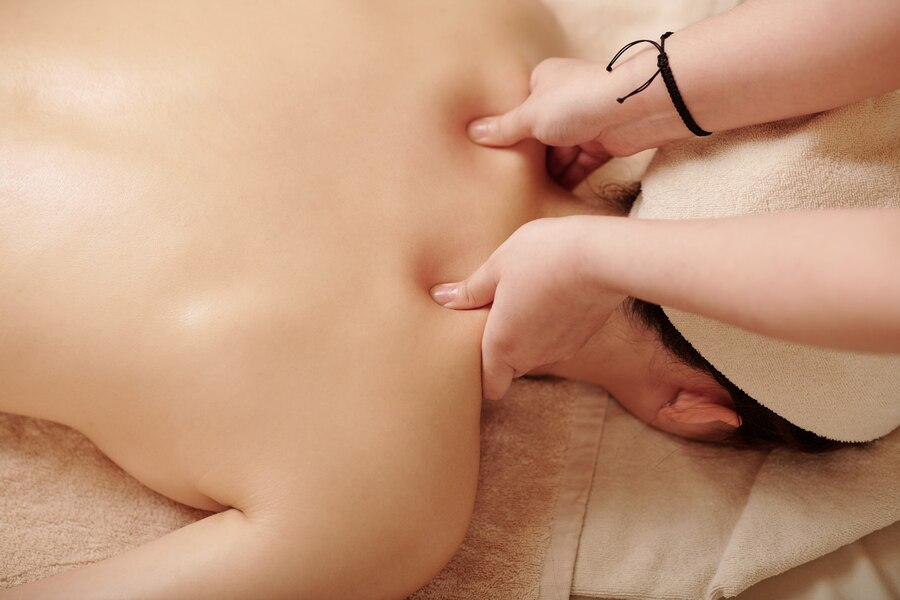In the world of physical therapy and wellness, Trigger Point Therapy has emerged as a standout technique for improving performance and relieving pain. Whether you’re an athlete looking to enhance your game or someone dealing with chronic pain, understanding how trigger points affect your body can be a game-changer. This blog delves into the essence of Trigger Point Therapy, exploring how it can elevate your physical performance and overall well-being.
What is Trigger Point Therapy?
Trigger Point Therapy focuses on identifying and treating trigger points—those tender, tight knots in your muscles that can cause pain and discomfort. These points are often the result of muscle overuse, poor posture, or stress. They can lead to localized pain or radiate discomfort to other parts of the body, making them more than just a minor annoyance.
When a muscle is overloaded or overstressed, it can develop trigger points. These are essentially small, hyperirritable spots within a muscle or its fascia (the connective tissue surrounding muscles). These points can be tender to the touch and can create a range of symptoms, from sharp pain to a general feeling of discomfort.
How Trigger Point Therapy Works
Trigger Point Therapy involves applying pressure to these specific points to release the tension and alleviate pain. The therapy is based on the idea that by deactivating these trigger points, you can reduce pain, improve muscle function, and boost overall physical performance.
Here’s a step-by-step look at how Trigger Point Therapy works:
- Identification: A trained therapist locates the trigger points by palpating the muscles. They will press on various areas to find the spots that cause discomfort or radiate pain.
- Application of Pressure: Once a trigger point is located, the therapist applies direct pressure. This pressure can vary from gentle to firm, depending on the severity of the trigger point and the individual’s comfort level.
- Release: The pressure applied to the trigger point helps to increase blood flow and oxygen to the area. This process promotes relaxation of the muscle and helps to break down the knots.
- Stretching and Rehabilitative Exercises: Following the release of the trigger points, stretching and strengthening exercises may be recommended to prevent the recurrence of trigger points and to improve overall muscle function.
Benefits of Trigger Point Therapy
Trigger Point Therapy offers numerous benefits, particularly for those seeking to enhance their physical performance or address specific pain issues. Here are some key advantages:
Pain Relief
One of the most immediate benefits of Trigger Point Therapy is pain relief. By targeting and deactivating trigger points, the therapy can provide significant relief from both acute and chronic pain. This can be particularly helpful for athletes who experience muscle soreness or tension from intensive training.
Improved Flexibility and Range of Motion
Trigger points can restrict movement and limit flexibility. By addressing these knots, Trigger Point Therapy can help to restore normal muscle function and improve your range of motion. This is essential for athletes who need to maintain optimal flexibility for performance.
Enhanced Muscle Function
Muscle knots can affect how well your muscles function. By relieving these knots, Trigger Point Therapy can help to improve muscle function and efficiency. This can lead to better overall performance in physical activities.
Reduced Muscle Tension
Chronic muscle tension can lead to discomfort and even contribute to other health issues. Trigger Point Therapy helps to alleviate this tension, promoting a more relaxed and balanced muscular system.
Better Posture
Trigger points can sometimes be related to poor posture. By addressing these points, Trigger Point Therapy can help to improve your posture, which in turn can lead to better alignment and reduced strain on your muscles and joints.
Faster Recovery
For athletes, recovery time is crucial. Trigger Point Therapy can aid in the recovery process by reducing muscle soreness and enhancing blood flow to the affected areas. This can help athletes get back to their training routines more quickly.

Integrating Trigger Point Therapy into Your Routine
If you’re considering incorporating Trigger Point Therapy into your wellness routine, here’s how you can get started:
Find a Qualified Therapist
It’s important to seek out a qualified and experienced therapist who specializes in Trigger Point Therapy. They will have the knowledge and skills necessary to effectively locate and treat your trigger points.
Communicate Your Needs
Be open with your therapist about your specific issues and goals. This will help them tailor the therapy to your individual needs and ensure that you get the most benefit from each session.
Stay Consistent
For optimal results, consistency is key. Regular sessions of Trigger Point Therapy, combined with recommended stretching and strengthening exercises, can help you achieve and maintain the best possible outcomes.
Incorporate Self-Care Practices
In addition to professional therapy, consider incorporating self-care practices into your routine. Techniques such as self-massage, stretching, and using a foam roller can help to maintain the benefits of Trigger Point Therapy and prevent the recurrence of trigger points.
Common Myths and Misconceptions
As with any therapy, there are myths and misconceptions surrounding Trigger Point Therapy. Here are a few to clear up:
It’s Just a Massage
While Trigger Point Therapy involves applying pressure to muscles, it’s not the same as a traditional massage. The focus is specifically on deactivating trigger points rather than just providing general relaxation.
It’s Painful
Some discomfort is normal during Trigger Point Therapy, but it shouldn’t be unbearable. The goal is to release tension, not to cause additional pain. Communicate with your therapist to ensure that the pressure is comfortable and effective for you.
It’s Only for Athletes
Although athletes often benefit from Trigger Point Therapy, it’s not limited to them. Anyone experiencing muscle pain, tension, or limited range of motion can benefit from this therapy.
Tips for Maximizing the Benefits
To get the most out of Trigger Point Therapy, consider these tips:
- Stay Hydrated: Drinking plenty of water helps to flush out toxins and supports muscle recovery.
- Follow Recommendations: Adhere to any stretching or strengthening exercises recommended by your therapist to enhance the benefits of the therapy.
- Practice Good Posture: Maintaining proper posture can help prevent the development of new trigger points and promote overall muscle health.
- Listen to Your Body: Pay attention to how your body responds to the therapy and communicate with your therapist if you experience any unusual discomfort or changes.
Relieve Pain and Enhance Mobility with Targeted Therapy
Trigger Point Therapy offers a focused approach to addressing persistent pain and mobility issues. By targeting specific muscle knots, or trigger points, this therapy helps to release tension and alleviate discomfort. These trigger points often result from overuse, poor posture, or stress, leading to pain that can restrict movement. By applying precise pressure to these areas, Trigger Point Therapy promotes increased blood flow and oxygenation, which aids in muscle relaxation and pain relief.
Enhancing mobility is another significant benefit of Trigger Point Therapy. By relieving the tightness in your muscles, the therapy helps to restore normal function and improve your range of motion. This can be particularly beneficial for athletes or individuals dealing with chronic pain, as it allows for smoother and more fluid movement. Regular sessions, combined with proper self-care and stretching, can lead to lasting improvements in both pain management and mobility.
Revive Your Muscles and Performance with Expert Trigger Point Therapy
Reviving your muscles and boosting your physical performance can be achieved through expert Trigger Point Therapy. This specialized technique focuses on identifying and treating muscle knots that hinder your physical capabilities. By applying targeted pressure to these problematic areas, Trigger Point Therapy helps to break down tight knots and alleviate associated pain. This process not only provides immediate relief but also contributes to long-term improvements in muscle function and overall performance.
For athletes and active individuals, enhancing performance is crucial. Trigger Point Therapy can significantly improve muscle function, leading to better strength, flexibility, and endurance. By addressing the root causes of muscle tension and pain, this therapy helps you perform at your best. Whether you’re preparing for a big event or seeking relief from daily discomfort, expert Trigger Point Therapy can be a valuable tool in revitalizing your muscles and optimizing your physical performance.
Conclusion
Incorporating Trigger Point Therapy into a wellness routine can significantly enhance physical performance and overall well-being. By targeting and relieving muscle knots, this therapy not only alleviates pain but also improves mobility, flexibility, and muscle function. At Integrative Chiropractic in Overland Park, expert professionals are dedicated to helping individuals achieve optimal physical health through personalized Trigger Point Therapy. Whether aiming to boost athletic performance or seeking relief from chronic discomfort, this tailored approach ensures the best results. For those interested in starting a journey toward a more active and pain-free life, contact Integrative Chiropractic at 913-451-7500.

